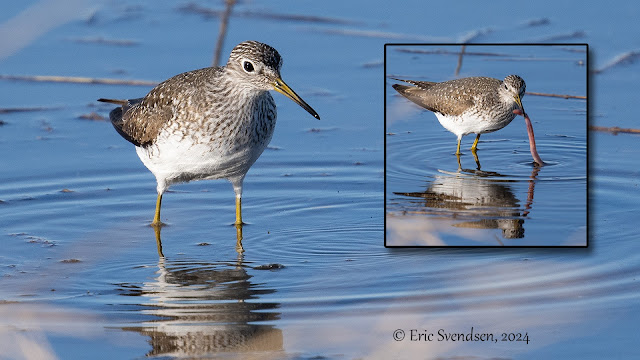Solitary sandpiper seeks sustenance
I have always thought of sandpipers as being shore birds, in the literal sense, where they inhabit the shoreline of lakes and streams looking for aquatic morsels. Needless to say, I was surprised when I found one channelling its inner robin and working tirelessly to yard a worm out of the ground. The water you see in the above photo was a puddle that appeared after a rainfall in a farmer's field across from where we were camping in Leduc. It disappeared in a couple of days.
I suppose the habitat was familiar enough for the sandpiper that it felt comfortable searching for any suitable fodder that it came across. Sandpipers use their long bills to probe for invertebrates. The saturated ground meant that the substrate was soft and easily worked, allowing the bird to find the worm as it searched for food.
Solitary sandpipers are a little different from many of their cousins. They look for food rather than probing for it. Often a sandpiper will eat what it cannot see because it is found beneath the substrate's surface. This is true for other species such as the western, spotted, and least sandpipers. Solitary sandpipers are more likely to take creatures it finds on the surface, which is likely where this worm was when it was discovered.
I saw a small flock of least sandpipers in the same area the day before. Although I did not find them, I was pleased to come across this solitary one.
Thanks for reading.
Eric Svendsen www.ericspix.com




Comments
Post a Comment